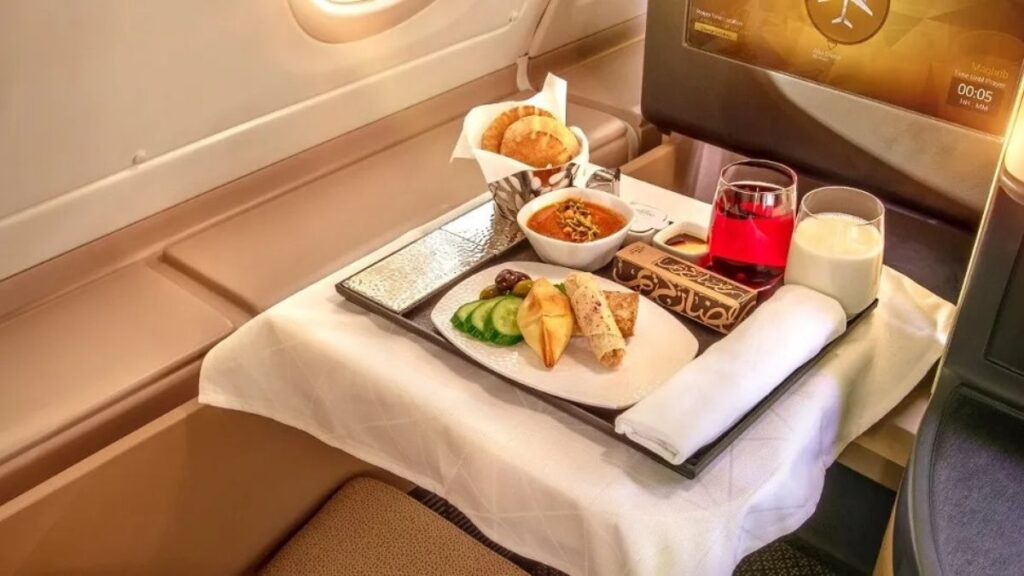Air travel has evolved from being a simple mode of transportation to a comprehensive experience that passengers look forward to. One of the most underrated yet essential aspects of this journey is inflight catering services. From gourmet meals in business class to thoughtfully curated trays in economy, inflight meals contribute significantly to the overall satisfaction of air passengers. As airlines compete for loyalty and differentiation, inflight catering has become a powerful tool to enhance comfort, hospitality, and brand identity in the sky.
1. First Impressions Matter
Passengers often form their first impression of an airline from their experience onboard. While seat comfort and entertainment options are important, food often plays a more emotional and memorable role. The aroma of a hot meal being served, the presentation, and the taste create lasting impressions. Inflight catering services help airlines deliver a first-class experience across all cabins, enhancing passengers’ perceptions from the moment the food trolley rolls down the aisle.
2. Personalized and Diverse Menus
One of the most remarkable developments in inflight catering services is the shift toward personalization. Airlines now offer a variety of meals that cater to different tastes, dietary restrictions, religious preferences, and cultural backgrounds. Vegetarian, vegan, gluten-free, diabetic, kosher, and halal meals are now commonly available and pre-orderable.
This diversity ensures that passengers feel respected and valued. It also provides comfort to those with strict dietary needs, reducing anxiety during travel and improving the overall flying experience. Some premium carriers even allow passengers to select meals from a digital menu before departure, adding another layer of convenience and control.
3. Quality and Freshness at 35,000 Feet
Inflight catering services face the unique challenge of preparing meals that must taste great even at cruising altitude, where taste buds are less sensitive due to dry cabin air and lower pressure. Leading inflight catering providers overcome this with specialized culinary techniques, using bold flavors, umami-rich ingredients, and proper seasoning.
Moreover, inflight meals are made using fresh, high-quality ingredients in temperature-controlled kitchens near airports. These meals are cooked, chilled, and transported in strict hygienic conditions, ensuring both safety and freshness. Passengers notice the difference, and high-quality meals lead to higher satisfaction ratings.
4. Brand Differentiation and Loyalty
In a crowded airline industry, offering an exceptional inflight dining experience has become a unique selling point. Airlines like Emirates, Singapore Airlines, and Qatar Airways are known for their luxurious inflight catering services that mirror five-star dining. Even budget airlines are finding creative ways to improve their meal offerings—introducing local cuisine, gourmet snacks, or celebrity chef partnerships.
This level of attention to food not only differentiates a brand but also builds loyalty. Frequent flyers often recall positive meal experiences and share them through social media or word of mouth, enhancing an airline’s reputation and appeal.
5. Technology-Driven Efficiency
Modern inflight catering services leverage technology to streamline operations and reduce waste. From predictive analytics to determine meal preferences to mobile apps that allow meal pre-ordering, tech plays a vital role in ensuring the right meals reach the right passengers efficiently.
Additionally, integration between airlines and catering providers ensures real-time tracking of orders, dietary requests, and stock levels. This minimizes errors, improves meal delivery times, and ultimately contributes to smoother onboard service.
6. Sustainability in the Sky
Today’s passengers are more conscious of the environmental impact of their travel choices, and airlines are responding accordingly. Many inflight catering services are adopting sustainable practices such as:
- Using biodegradable or recyclable packaging
- Reducing food waste with accurate forecasting
- Partnering with local farms and suppliers for fresh produce
- Offering plant-based meal options
These initiatives resonate with environmentally conscious travelers and reinforce a positive brand image while contributing to global sustainability goals.
7. Cultural Connection Through Cuisine
For international travelers, food onboard can be a delightful introduction to a destination’s culture. Airlines often design menus that reflect the local culinary traditions of their origin or destination countries. A Japanese meal served on a flight to Tokyo, or a South Indian thali on a flight to Chennai, provides an immersive cultural touchpoint that enhances the journey and builds anticipation for the destination.
This thoughtful cultural alignment through inflight catering services helps airlines tell a story, deepen emotional connections, and enrich the passenger’s travel experience.
8. The Emotional Comfort of Food
Traveling, especially on long-haul flights, can be tiring and stressful. A warm, satisfying meal can be incredibly comforting in such situations. Inflight catering services play an emotional role by offering familiarity and warmth in an unfamiliar environment. Whether it’s a cup of hot soup, a warm bread roll, or a favorite dessert, inflight meals provide a sense of normalcy and relaxation during the journey.
Conclusion
Inflight catering services are far more than a logistical necessity; they are a key element of the passenger experience. From personal comfort and cultural connection to sustainability and brand loyalty, food onboard serves many purposes beyond nutrition. As travelers continue to demand more personalized and meaningful experiences, the role of inflight catering will only grow in importance. For airlines aiming to deliver excellence in the sky, investing in top-tier catering services is not just an option—it’s a competitive imperative.






